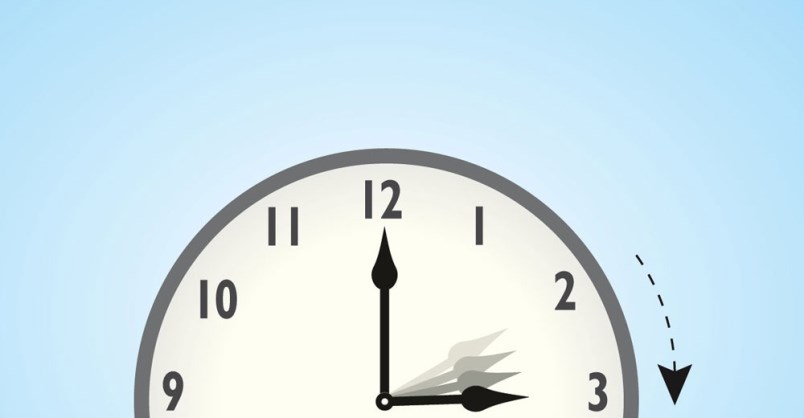We should not move to permanent Daylight Saving Time. The world already makes so little sense.
It is a specious argument that studies show more traffic accidents in the days following the fall-back than after the spring-ahead, therefore we should go to permanent DST.
If we got rid of DST and stayed on Standard Time year-round, there would be no sudden darker evenings in the fall any more than there would be under year-round DST.
Apparently it is the twice-yearly clock-changes that people dislike most. If that’s the case, let’s try Standard Time year-round and see how it goes.
It doesn’t matter much if the U.S. states south of us go to permanent DST. There are other places that are out of alignment with places north or south of them, like Saskatchewan.
Sure, it would be nice if they were in alignment, but not if they were far out of alignment with Solar Time (as Saskatchewan is). Wikipedia has a world time zone map that shows the discrepancies between official time and solar time (under the “time zone” article), which makes all of this clear. We should be trying to clear up this messiness, not make it worse.
For as long as there have been clocks, 12 noon has been the time when the sun reaches its highest point in the sky at any given location on the planet, and is why the 12 is at the top of the clock. (This “solar time” is the standard that our Standard Times are supposed to approximate.)
Then, to more easily co-ordinate train schedules, someone came up with time zones, which grouped localities into longitudinal bands an hour apart from one another. These introduced a little inaccuracy in some places, where the sun reached its highest point up to half an hour before or after 12 noon, on either side of the defining longitude.
Being a half-hour off true solar time is tolerable or unnoticeable, but, looking at the map, the time-zone boundaries in many areas have been moved even farther away from their optimal place to avoid dividing population centres between two times.
This is reasonable, but in some places it has gotten out of hand. Whole countries like Spain and Argentina are a zone removed from where they should be. The Chinese government forces the whole country to go by Beijing time where there should be at least three time zones.
Then someone came up with Daylight Saving Time, for whatever reason. This advances the clock one hour, in areas that follow the practice. In areas west of the zone’s central longitude, where the clock is already ahead of solar time, such as here on Vancouver Island, DST advances our clocks by more than one hour from solar time: about one hour and 20 or 30 minutes here on the Island.
It gets worse the farther north and west you go. The centre line of our Pacific time zone is defined as 120°W longitude, which runs up the Okanagan and, farther north, forms the straight-line portion of the B.C.-Alberta border. This should be the centre of our time zone, not the eastern edge of it.
And up there, it’s not even the eastern edge — the B.C. Peace region has joined Mountain Time when the Alberta Peace should have joined Pacific. Add DST to that and they’re another hour off.
Yukon is in our Pacific time zone but really it should be another time zone west, with Juneau. With DST, it is two hours off, unless it splits off to stay with PST or join Juneau.
Obviously, DST does not create any extra daylight — what it adds to the evening it takes from the morning. This is fine in the summer when there are plenty of daylight hours to play with (and without it the sun would rise about 4 a.m. in June instead of 5 a.m.), but what would it do in December?
Under Standard Time, the sun rises at about 8 a.m. in the Okanagan, and later on the coast. With DST, that would be 9 a.m. or later. Don’t say there won’t be more groggy schoolkids and workers then.
Instead, why can’t we change “office hours” to 8 to 4 instead of 9 to 5? That would give the extra hour of daylight recreation time in the evening, and we could still recognize 12 noon at the proper time. (School hours can stay at 9 to 3 without any problems.)
Eric Oscar is a student of earth sciences and astronomy, and lives in North Cowichan.



